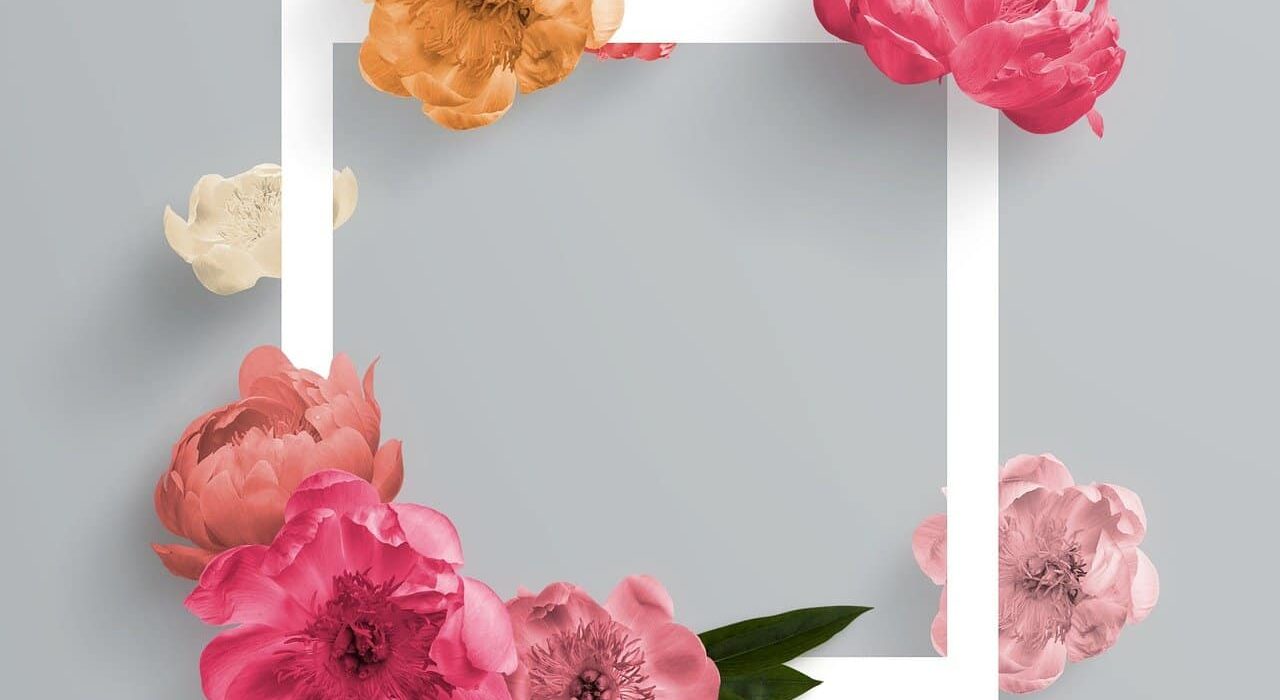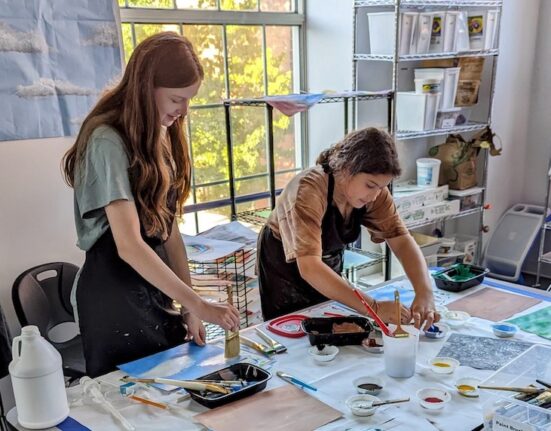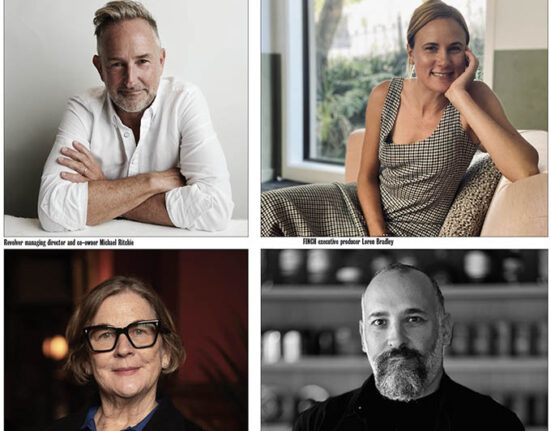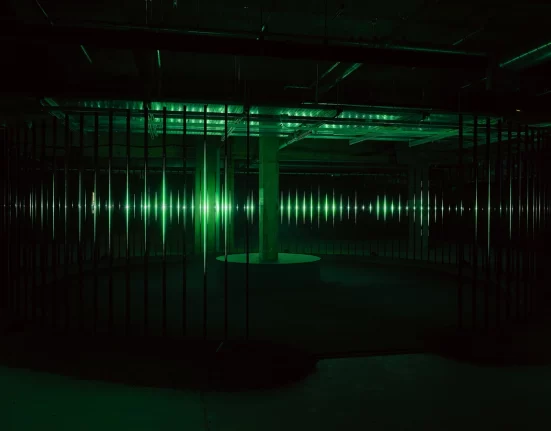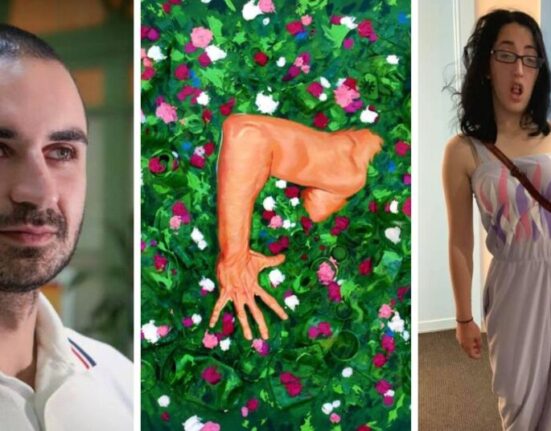In 2023, artificial intelligence has penetrated all areas of life, art and visual culture surprisingly swiftly. Thousands of digital tools, services and products based on AI have been produced this year, while the success of Chat GPT and Dalle-e 2 has resulted in notorious redundancies and strikes in the creative industry. However, these profound changes would not have been possible were it not for the three quintessential technologies at the centre of the Fourth Industrial Revolution: the Internet, computer and smartphone. Together, they form the foundation for the so-called intensification technologies, namely apps, cloud solutions and AI. It is hard to imagine today’s reality without them. It might seem that this topic has already been exhausted – on the contrary, we are still discovering new ways in which technologies affect us, our lives, art and culture.
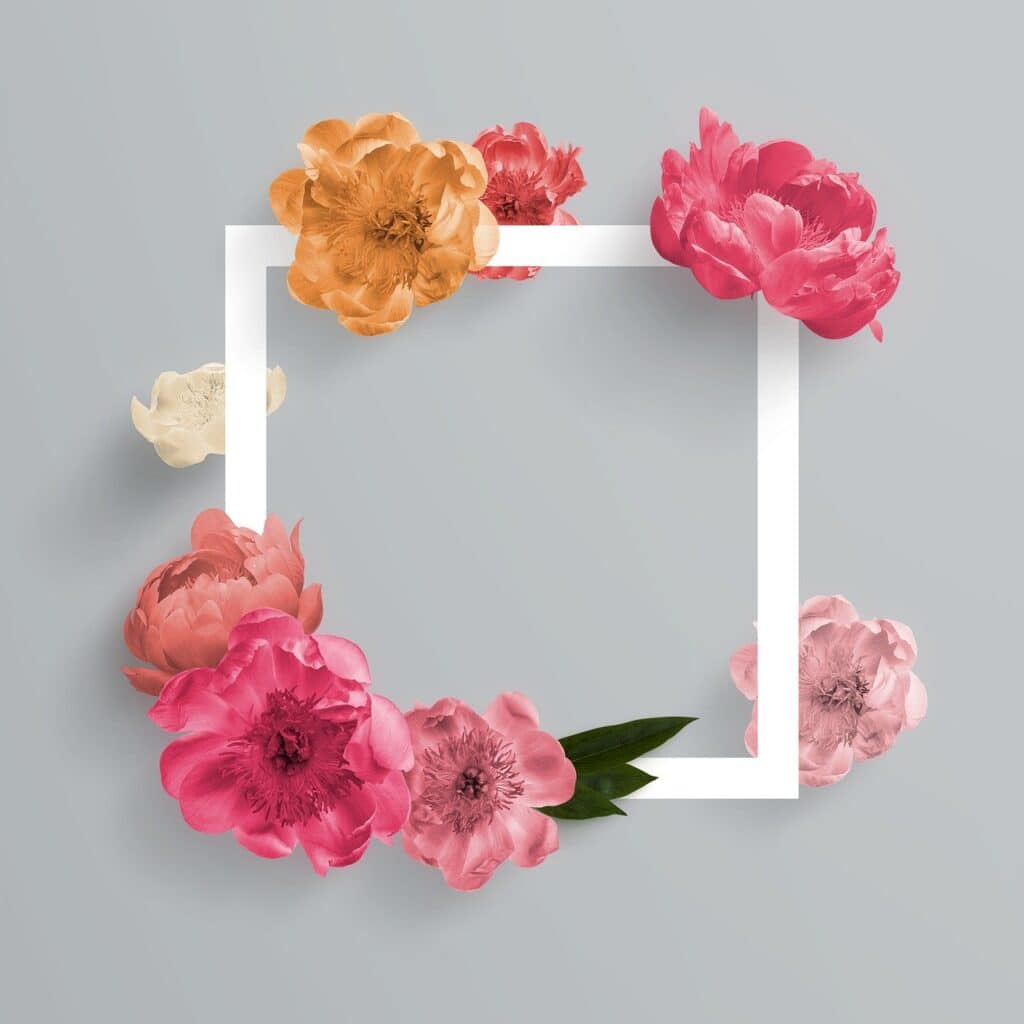

Mobile revolution
To gain a firmer grasp on the ongoing AI revolution, it is worth re-examining the early days of the mobile revolution, which started only 16 years ago. This will allow to better understand the significance of current as well as any future developments. Nowadays, over 5 billion people use a smartphone, which might be called the most popular electronic device on the planet, including illiterate and barely educated people, who therefore tend to communicate through images, emojis and gestures (this phenomenon is analysed in more detail for instance in the VICE news report “Inside Pakistan’s War On TikTok”).
The development cycle of mobile technologies (as well as AI and other kinds) can be illustrated best by the forecasting tools, such as the Gartner Hype Cycle, which I also mentioned in my article “Predicting the Future: Visual Arts in 2050” (Contemporary Lynx Online, 19 July 2019). It demonstrates clearly that technologies that are developed over years, often go through a fairly volatile process, before they enter the mainstream and revolutionise reality. We can never be certain when this process will culminate, or when the maturity of a given technology will intersect with its potential for application, production and scaling. Therein lies the element of surprise, which we could have observed this year. New solutions are developed at different paces, awaiting the perfect moment: the emergence of technologies and devices, on which they could operate, as well as the openness of commerce and society to use them.
At times, these changes happen so smooth that crucial moments can only be discerned in hindsight. In my opinion, this is precisely the case with mobile devices. The era of omnipresent smartphone, devices with colourful touchscreen, the power of a small computer, and access to the Internet and app store that could last several days without recharging (thus guaranteeing actual mobility) began in earnest after the launch of the first iPhone in 2007. Nonetheless, it was preceded by decades of people interacting with mobile phones (or so-called dumb phones) used mainly for calling, texting and playing Tetris, which ultimately could be considered as prototypes of smartphones.
It was a significant milestone in the visual culture. It wasn’t until the smartphone that we were able to quickly and intuitively create and share content on our own, as well as experience art and culture 24/7, viewing just-digitised artworks on a tram or attending virtual museum exhibitions in dedicated apps (I addressed this topic in the articles “Art in Your Pocket. Museums in Your Smartphone – How The Modern Mobile Phone-driven Society Can Access Works of Art,” Contemporary Lynx Online, 26 May 2018; “10 Culture-Oriented Apps That Are Worth Installing on Your Phone in 2021,” Contemporary Lynx Online, 7 July 2021). Designed for smartphones, mobile-first or mobile-only apps, such as Instagram and Snapchat, have been based on the specific features of mobile devices, which has revolutionised visual culture thoroughly.


How we became phono sapiens
Nowadays, mobile devices, smartphones and tablets, are so ubiquitous that we reach for them in the most intimate moments to record private experiences and document fragments of our bodies in the bathroom or bed. We use them constantly for work, entertainment, communication, transactions and creation. Smartphones and their ecosystem have fundamentally altered the way we interact, date, create, write and watch. It is so much more than a mere lens through which we observe and process the world: many perceive it as an extension of their senses, an external brain or even…an integral part of the human organism. We rely on these devices to an increasingly large extent when we want to remember something, record our memories and recall them, making them virtually indispensable.
In comparison to other electronic devices, smartphones and tablets have a certain set of qualities that contribute to their success. First and foremost, they are mobile: we can use them on the go, during commutes and at various angles, for example when taking selfies. With multi-touch screens, interactions are multimodal and mainly haptic, which signals the intimate and private nature of the device itself (along with its compact size that fits into your pocket). Interactions can also be based on movement, gestures and motions due to the sensors such as an accelerometer, gyroscope, NFC and GPS. This allows us to create and receive mobile-specific multimedia content and use mobile-only apps, such as Pokemon Go. Built-in front and back cameras mediate the perception of the world in constant motion. Millions of mobile apps available online can expand the functions offered by mobile devices. All these qualities add up to a unique, intuitive, all-in-one electronic device.
Visual culture in the mobile era
Today, 85 per cent of photos are taken with a smartphone. Creating them so easy and intuitive that, to date, more than 50 billion pictures have been shared on Instagram. The widespread practice of taking pictures with smartphones, framing them, adding filters and uploading them has earned its moniker: iPhoneography. We all know (and take) selfies – the best known type of photograph rooted in mobile technology. Selfies have transformed the visual culture and the way we present ourselves, using unique angles and quick editing in user-friendly apps. Selfies are characterised by a casual, intimate aesthetic and the possibility of immediate editing with filters. If taken to extremes, they can alter the canon of beauty, distort our self-image and the perception of our bodies, even contribut to body dysmorphic disorders. Due to a specific creative process, inextricably linked to the movement of palms and hands, selfie tends to be defined as “both object and gesture”.
The unique framing and aesthetic of a selfie influence our perception of beauty, the rise of the one-off Insta-friendly fashion, the emergence of the so-called Insta spots and self-presentation on social media. In recent years, we have observed a trend of moving away from the insincerity of a selfie to the “natural” and “authentic” selfie with no filter. This trend manifests itself through an increasingly popular BeReal app, in which you cannot edit your selfie and only have 2 minutes a day for posting a picture. The photograph is taken with both the front and back camera of a mobile device, giving the viewer some insight into the actual surroundings in which the selfie was taken. BeReal follows another popular trend #Instagramvsreality, that involves disclosing the real effort and context behind the “perfect” selfie.
Apart from a selfie, iPhoneography signals another trend of “casual photography” originating from the fact that nowadays it is extremely easy to take and share photographs on mobile devices, constantly documenting every single moment of our lives – a dinner, a plant or an interior design.
Square and vertical
Just as the horizontal orientation of the image dominated culture due to the spread of cinema, currently it is a square and vertical format that takes precedence. This change happened as a result of the ergonomy of mobile devices, reflection of the way we hold them (with a raised hand) as well as the popularity of mobile-first platforms, such as Vine (do you remember?), Instagram and TikTok. The influence of new dominating formats is evident in photography, cinema, television and the art world. Artists, painters, graphic artists and designers gravitate towards vertical and square formats more often, taking into account the limitations of a small mobile screen early on in their creative process. They create content with high contrast, close-ups, symmetric and flat compositions (so-called flat lay), in the style known as Instagramism.


Shooting and watching films in a vertical format has become the norm, although only two decades ago it would have been hard to imagine. The preference for the vertical is evident in music videos (Kwiat Jabłoni), films (Tár) and TV series (Ultraviolet) as the reflection of a first-person, intimate perspective of characters, as well as a nod to the visual everydayness of an audience.
Universal productions, which can run on multiple platforms, are also being created. One of the pioneering examples of this way of thinking was the music video for the song Happy by Pharrell Williams (2014) composed in such a way that its reception is equally attractive in both vertical and horizontal formats.
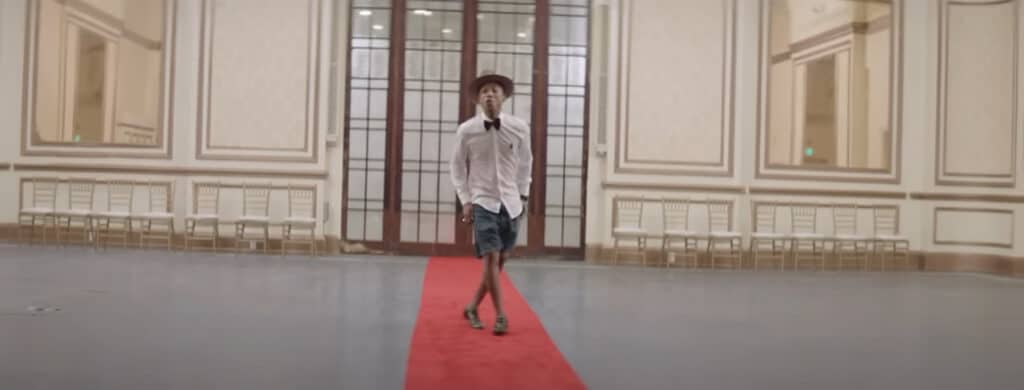

New forms of artistic expression
The mobile revolution has considerably accelerated the transfer of arts and culture to platforms – mobile-first social media, such as. TikTok and Instagram, are currently considered as key channels for creation, distribution and consumption of arts and culture content. They have altered not only the format of an audiovisual medium but also the narrative structure and its dynamic. Next to photography, the most popular form of self-expression are clips known from TikTok, Instagram and YouTube. Recorded with smartphones and watched on small screens, these micro-videos are characterised by a different type of framing than the one achieved with a professional camera, while the person recording often appears in the frame with their device. Depending on the limitations of a given platform and the author’s concept, the videos’ duration is usually between 3 seconds and 10 minutes. They consist of one or several shots (so-called nano shots) mixed with some static images, filters, subtitles, tags and interactive elements, e.g. buttons and links. Due to their exceptionally short duration, these kinds of videos utilise a brand-new way of building a narrative, in which the story culminates at the very beginning of a film instead of the middle, as it is usually the case in the traditional narrative model.
Completely new and unprecedented forms of artistic expression explore the boundaries and possibilities of the mobile medium, which seems analogous to the path taken by net art in the 1990s. App art, which I discussed in the article “App Art and New Media: How Mobile Apps Have Captured Artists’ Imagination,” (Contemporary Lynx Online, 21 July 2018), is a good example of this. It often provides inspiration or even a foundation for other applications. For instance, the Eyegroove app developed by Scottt Snibbe, one of the pioneers of app art, introduced filters that are used as a currency on Instagram and TikTok. In addition to app art, we can witness the evolution of other mediums, such as GPS art, digital graffiti or filter art. More and more artists tap into the potential offered by the ephemeral content published on mobile-first platforms.




Filtered reality
Mobile technology keeps pushing the boundaries of reality distortion through accessibility and ease of applying filters and effects. The mobile device itself mediates reality in a very specific manner, whether it is during the reception and creation of content on screen or one’s usage of the build-in camera. These shifts not only occur in our everyday lives, but also in architecture and environment. Architects and artists are now challanged to create Instagrammable installations, interiors and buildings. Aiming to generate hype and boost tourism, they create extravagant and impractical constructions made of rare, toxic materials, plastics and energy-consuming lighting, which look great on social media. This practice not only has a negative impact on the environment (resources’ depletion), but also on the local character and identity of places. As a result, cities worldwide are becoming increasingly similar due to this generic aesthetic popular on social media.
GPS functions used for geotagging popular spots on Instagram also pose a danger to the flora and fauna. Tourists, whose travel destinations are often based on Instagram pictures, follow in their footsteps, destroying the natural, pristine locations. Another related phenomenon involves straying off the designated trails and improper use of natural habitats, for instance, trespassing in the national parks, which causes erosion and harms ecosystems. Furthermore, it is worth remembering that every single picture, video or image carries a carbon footprint encompassing the costs of creating and hosting content, as well as additional water consumption, travel costs and pollution.
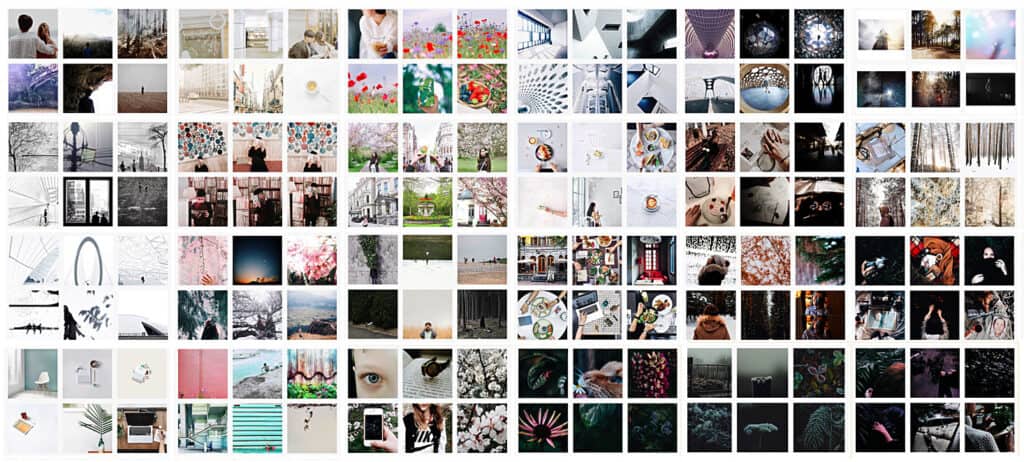

Data shows that various social media platforms have a different environmental impact, with TikTok, Reddit and Pinterest being the most energy-consuming. In this context, it is worth considering digital minimalism and limiting social media scrolling..
Conclusion
Like any type of technology, mobile technology and mobile-first platforms are far from neutral. They shape not only the audiovisual culture but also our behaviours, experiences, values, the way we interact and connect with each other. In the face of the state-of-the-art, current and upcoming revolutions in technology, their impact on ourselves and our relationship with the world should be constantly reflected upon. The culture post-mobile era is undergoing a sea change in terms of architecture, interior design, fashion and audiovisual formats. This change aslo affects us: our behaviours, gestures, habits, creative practices. With this in mind, it is even more important to remember that if you want to remember a moment, try not to take a photo or a video, just live in it without any mediating mobile technology available at your fingertips.
This article is based ona four-year research on visuality in the era of mobile [r]evolution conducted by the author as part of her PhD dissertation at the Polish-Japanese Academy of Information Technology in Warsaw. An extensive collection of visual netnography data is available on the Pinterest profile of the author.

